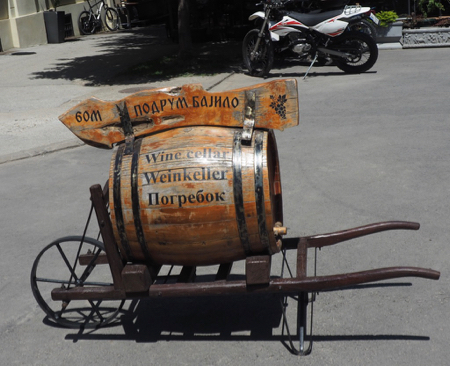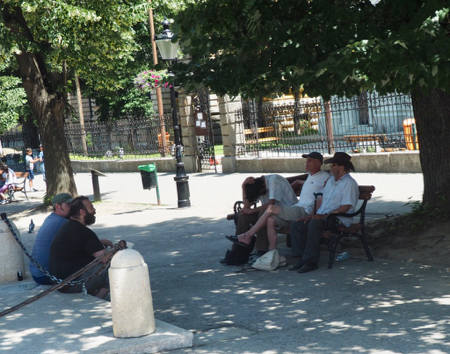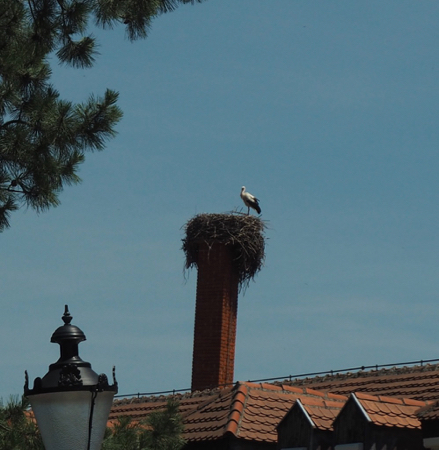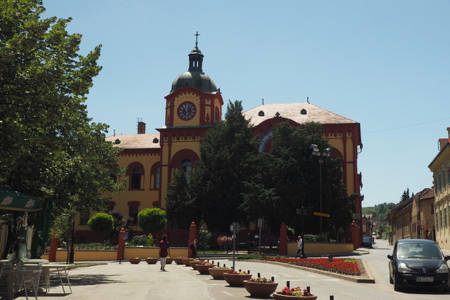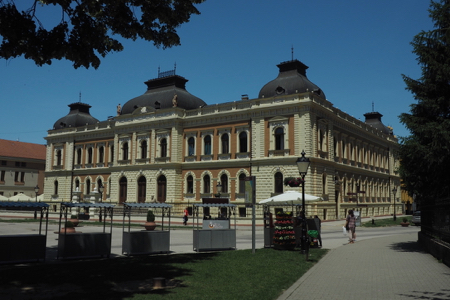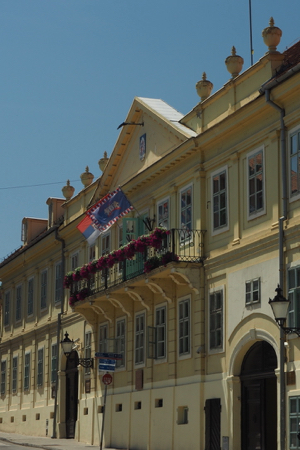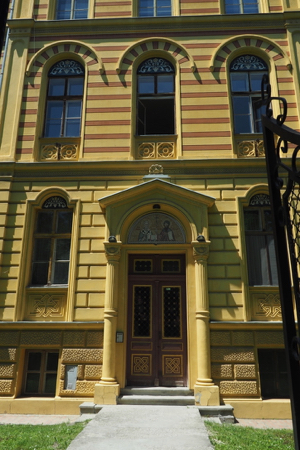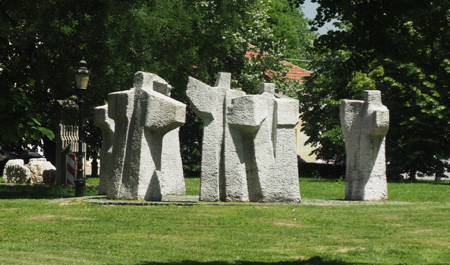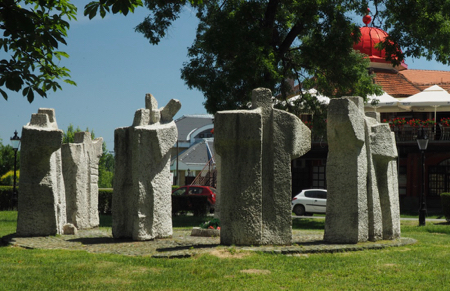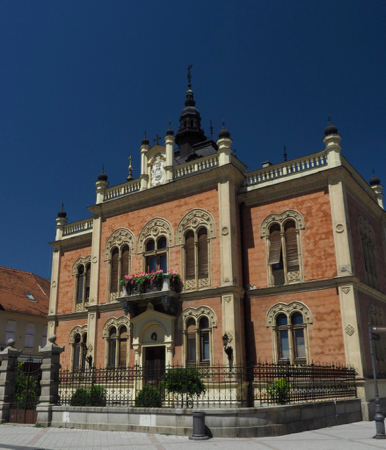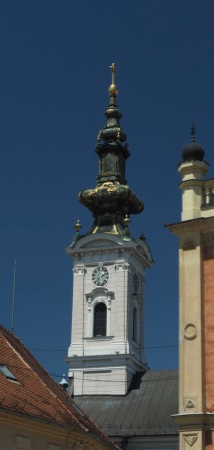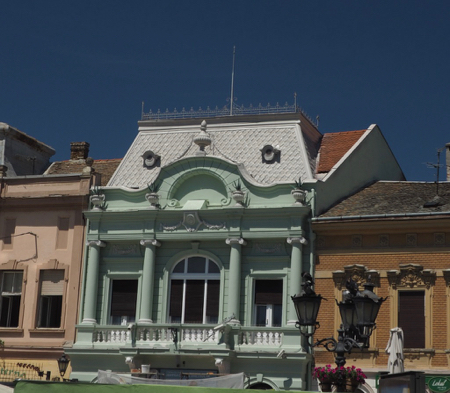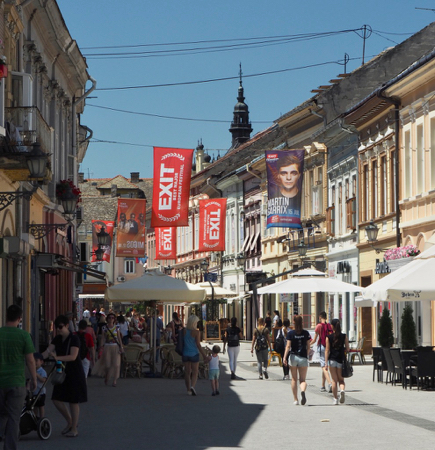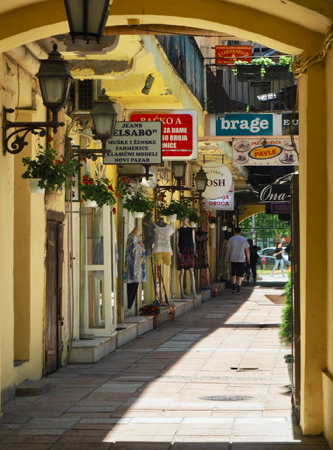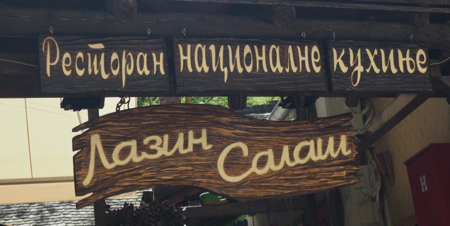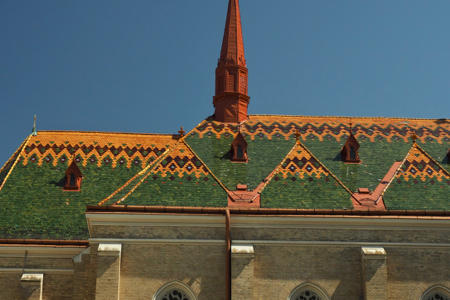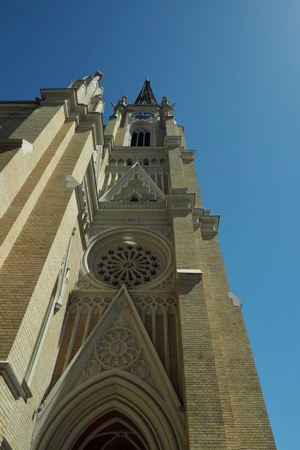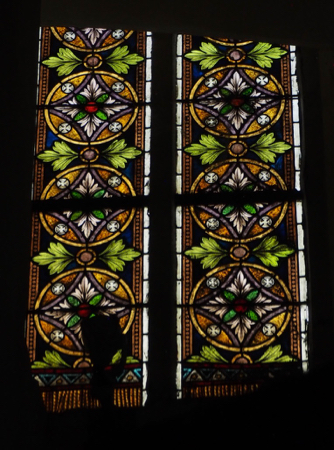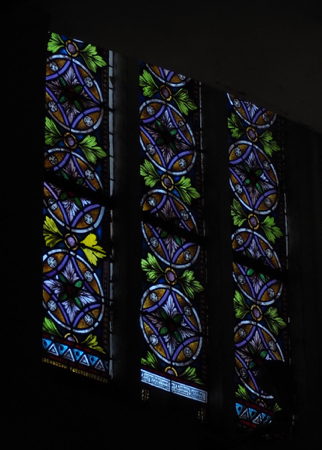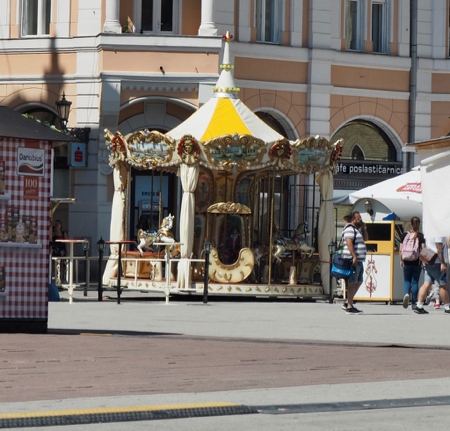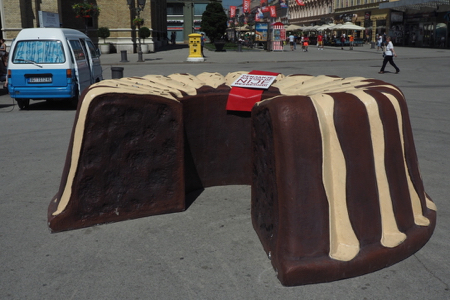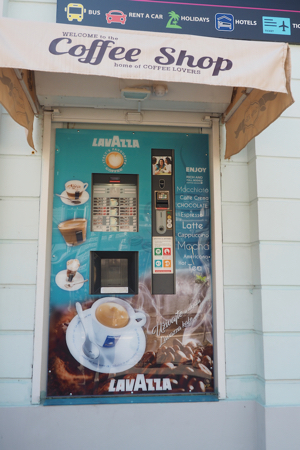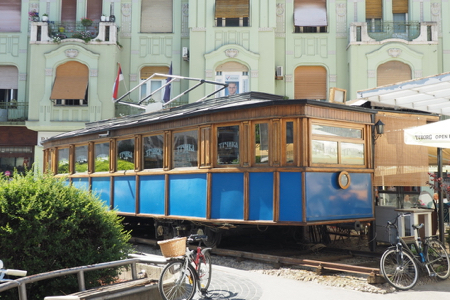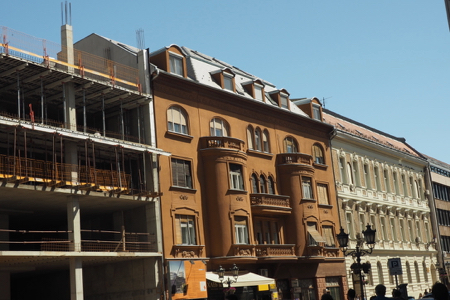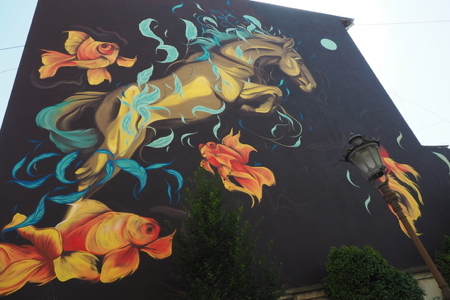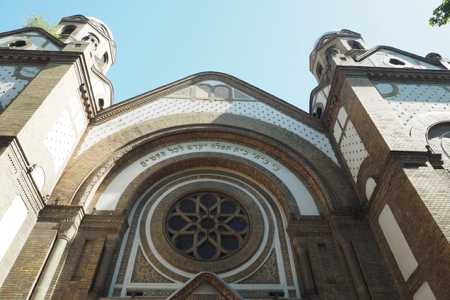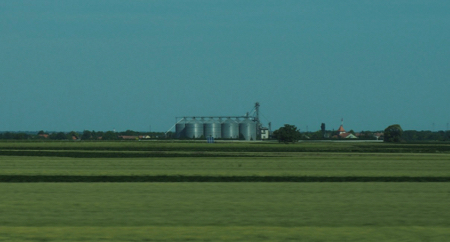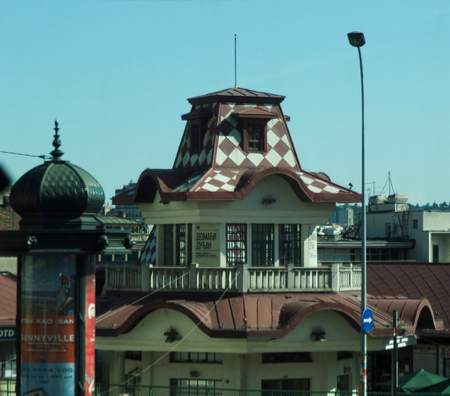We stopped at a young woman’s house in Sremski Karlovici and she showed us how she makes Bundt cakes and sells them in the town market. We tasted one she just took out of the oven. Once again, the house was small and cramped and had old plumbing and kitchen appliances.
We walked in the town of Sremski Karlovici. Milan pointed out the “oldest” public high school (gymnasium) in Serbia, the Orthodox Church, and the Orthodox seminary. Milan says that language, history, and religion are the glue that maintains the Serbian culture. This doesn’t jive with separate treatment for Albanian Moslems or remaining Turkish people who have been living in Serbia for centuries.
Nice sign
In the park
Stork and nest
Gymnasium of Karlovici
Clerical High School of St. Arsenije
Patriarch's palace
Seminary boarding school
Stone sculptures of the National Liberation struggle
Finally, we crossed the river to the town of Novi Sad, the second largest city in Serbia. We walked around the town looking at pretty architecture and ate lunch in Novi Sad. I did not understand the significance of the town other than it was a northern fortress town on the Danube that fought to keep the Austro-Hungarian empire from taking over northern Serbia. We walked to the town synagogue. There are only a few hundred Jews remaining here after WWII and the synagogue is not active.
Bishop's Palace
St. George's Serbian Orthodox Church
Pretty building
Local street
Local street
A licensing arm of the U.S. Polo Association - sells clothing, etc. in Novi Sad
Lunch
Roof of the Church of the Virgin Mary
Church of the Virgin Mary
Carousel
Bundt cake sculpture
On the right is a coffee vending machine mounted in the wall, on the street just like an ATM machine.
Street car turned diner
Novi Sad Synagogue
More huge grain elevators
Interesting architecture
On the way back to Belgrade we crossed the 2.8 km bridge 200 meters above the Danube. We have seen only McDonald's - one in Nis and one in Belgrade. Ramen is an Indian corporation that operates in Serbia. It manufactures its noodles from local ingredients and exports globally. The land on either side of the Danube is flat as a pancake and very fertile. Co-ops have enabled much larger fields growing sunflowers, corn, grain, and soy beans.
| Return to Top | Return to Itinerary | Return to Trips page to view other trips | Return to Dreamcatcher Home Page |

